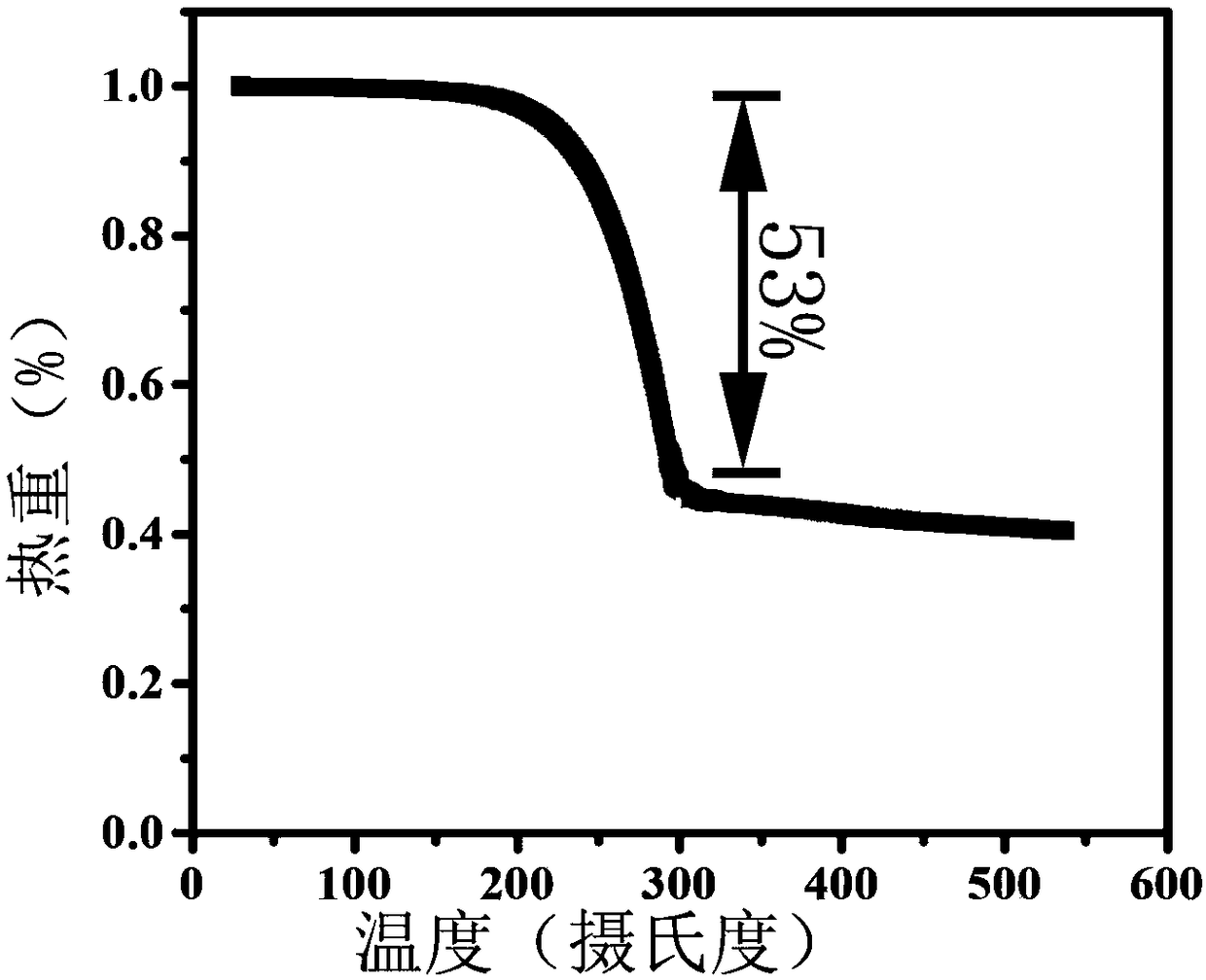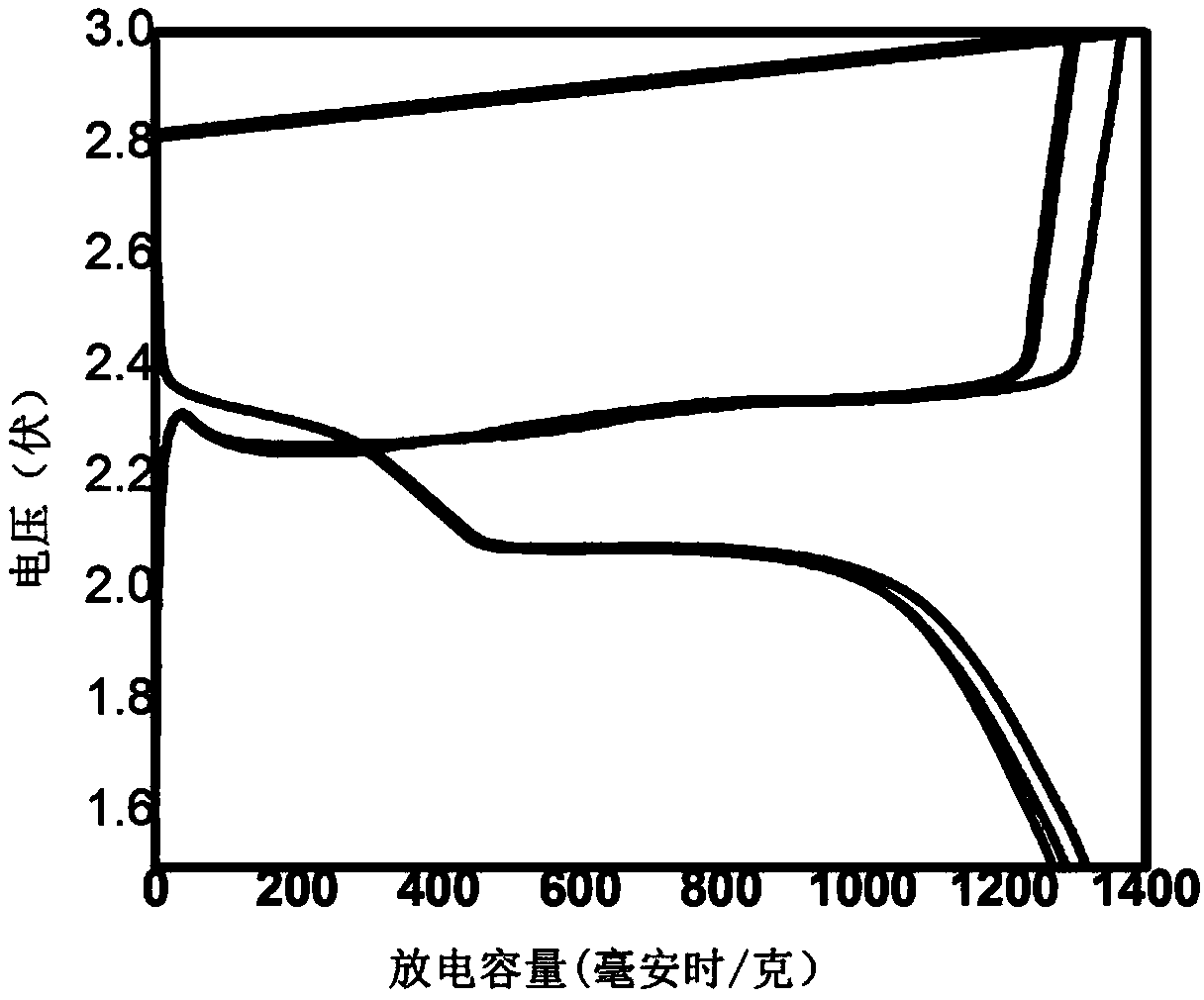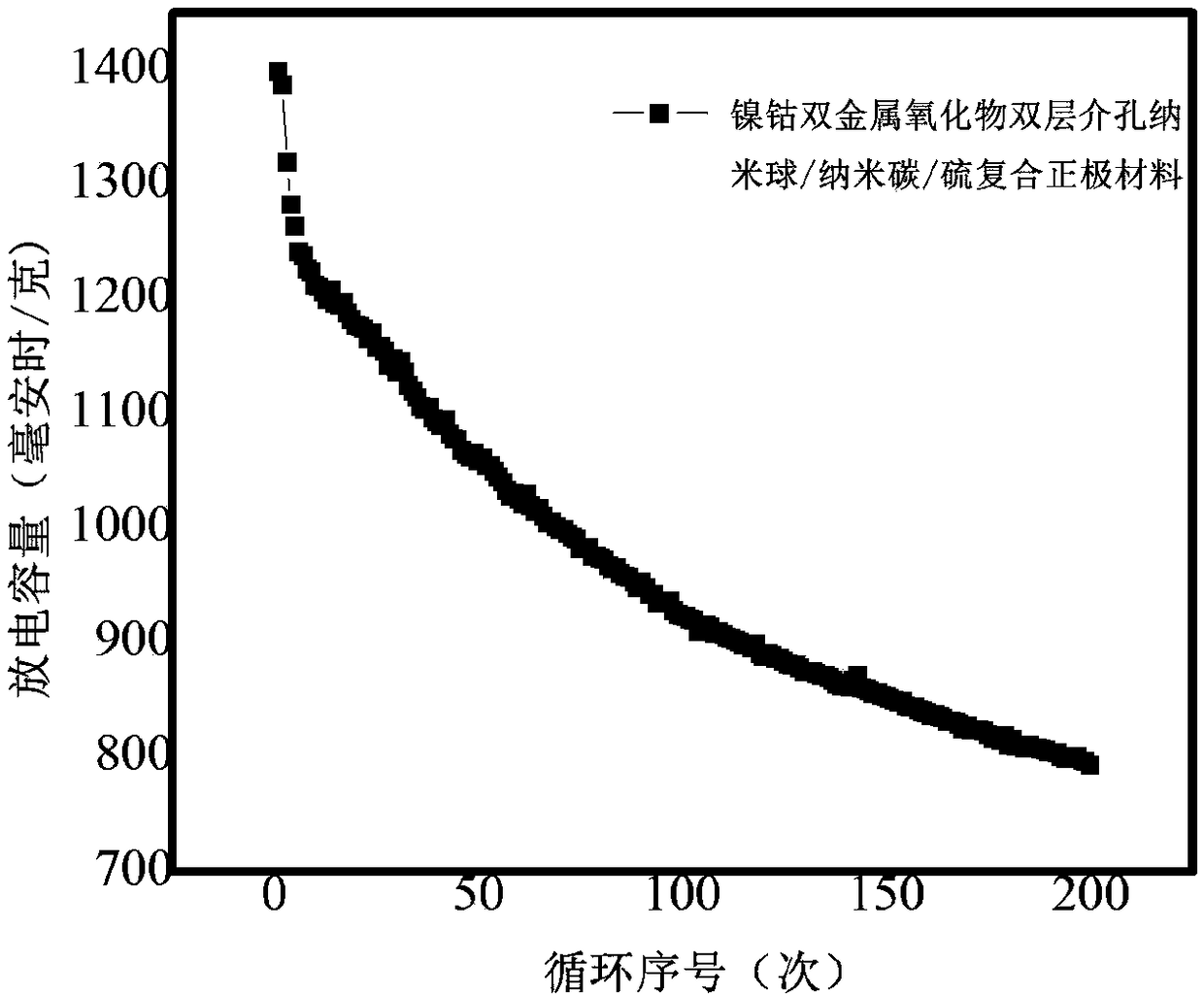Preparation method of positive electrode material for lithium-sulfur battery
A cathode material, lithium-sulfur battery technology, applied in the field of material chemistry, can solve the problems of low active material loading rate, battery system collapse, low electrochemical performance, etc., to improve the overall electrochemical performance, slow down the decay of specific capacity, The effect of improving cycle stability
- Summary
- Abstract
- Description
- Claims
- Application Information
AI Technical Summary
Problems solved by technology
Method used
Image
Examples
Embodiment 1
[0033] Step 1: Prepare monodisperse polystyrene microspheres by dispersion polymerization.
[0034]Prepare ethanol and water ratio and be 300ml of ethanol aqueous solution of 1:1, get 1g polyvinylpyrrolidone and add wherein, logical N 2 After removing the oxygen in the solution for 1 hour, add 10ml of styrene monomer and 1g of azobisisobutyronitrile, and react in a water bath at 100°C for 12 hours. The prepared polystyrene is centrifuged, washed repeatedly with ethanol, and then dried by a vacuum freeze-drying method for future use.
[0035] The second step: preparing hollow silica microspheres.
[0036] Add 3 g of polystyrene microspheres prepared in the first step and 3 g of dodecyltrimethylammonium bromide into an aqueous solution of ethanol (wherein the volume ratio of ethanol and water is 1:1), and ultrasonically disperse for 1 h. After adding 3ml of ammonia water (commercially available, with a concentration of 28% by mass, the following steps and examples are the same...
Embodiment 2
[0045] Step 1: Prepare monodisperse polystyrene microspheres by dispersion polymerization.
[0046] Prepare the ethanol aqueous solution that ethanol and water ratio are 1:2, get 2g polyvinylpyrrolidone and add wherein, pass N 2 After 1 hour to remove the oxygen in the solution, add 30ml of styrene monomer and 2g of azobisisobutyronitrile, and react in a water bath at 100°C for 12 hours. The prepared polystyrene is centrifuged, washed repeatedly with ethanol, and then dried by a vacuum freeze-drying method for future use.
[0047] The second step: preparing hollow silica microspheres.
[0048] The polystyrene microspheres and dodecyltrimethylammonium bromide prepared in the first step were added to an aqueous solution of ethanol (wherein the ratio of ethanol to water was 2:1), and ultrasonically dispersed for 1 h. Add 4ml of ammonia water (concentration: 28%) and then ultrasonically disperse for 1h. Under stirring condition, add 20ml of methyl orthosilicate, and then keep st...
PUM
| Property | Measurement | Unit |
|---|---|---|
| electrical conductivity | aaaaa | aaaaa |
Abstract
Description
Claims
Application Information
 Login to View More
Login to View More - R&D
- Intellectual Property
- Life Sciences
- Materials
- Tech Scout
- Unparalleled Data Quality
- Higher Quality Content
- 60% Fewer Hallucinations
Browse by: Latest US Patents, China's latest patents, Technical Efficacy Thesaurus, Application Domain, Technology Topic, Popular Technical Reports.
© 2025 PatSnap. All rights reserved.Legal|Privacy policy|Modern Slavery Act Transparency Statement|Sitemap|About US| Contact US: help@patsnap.com



